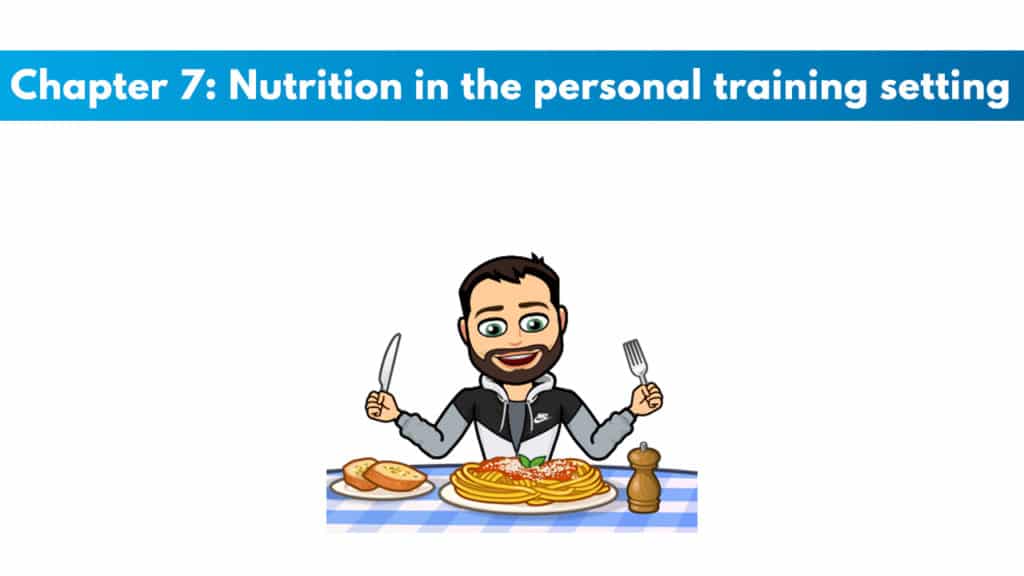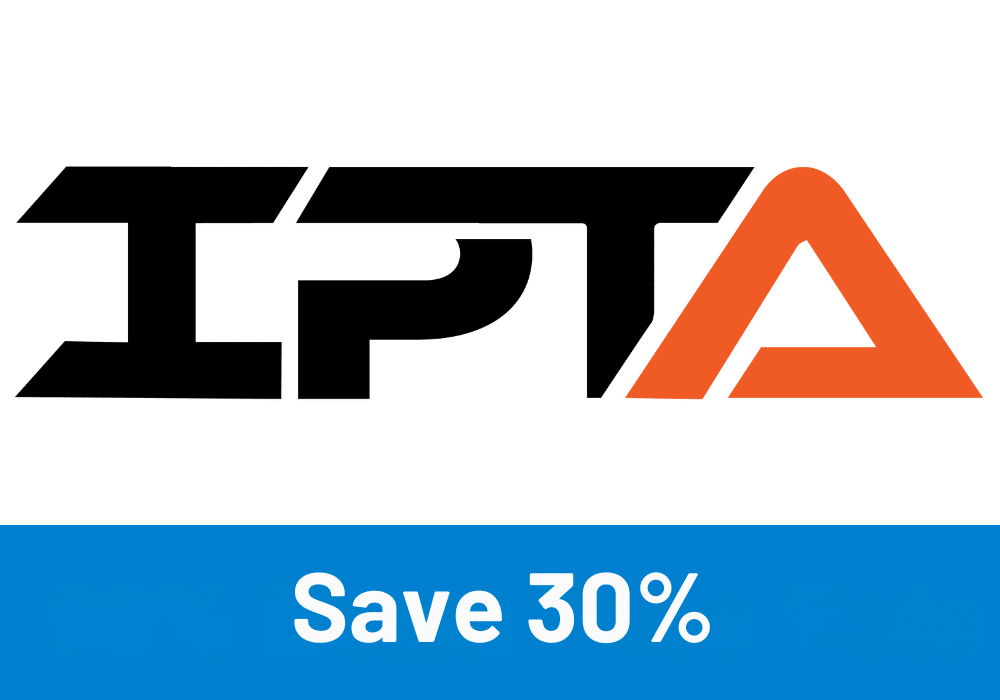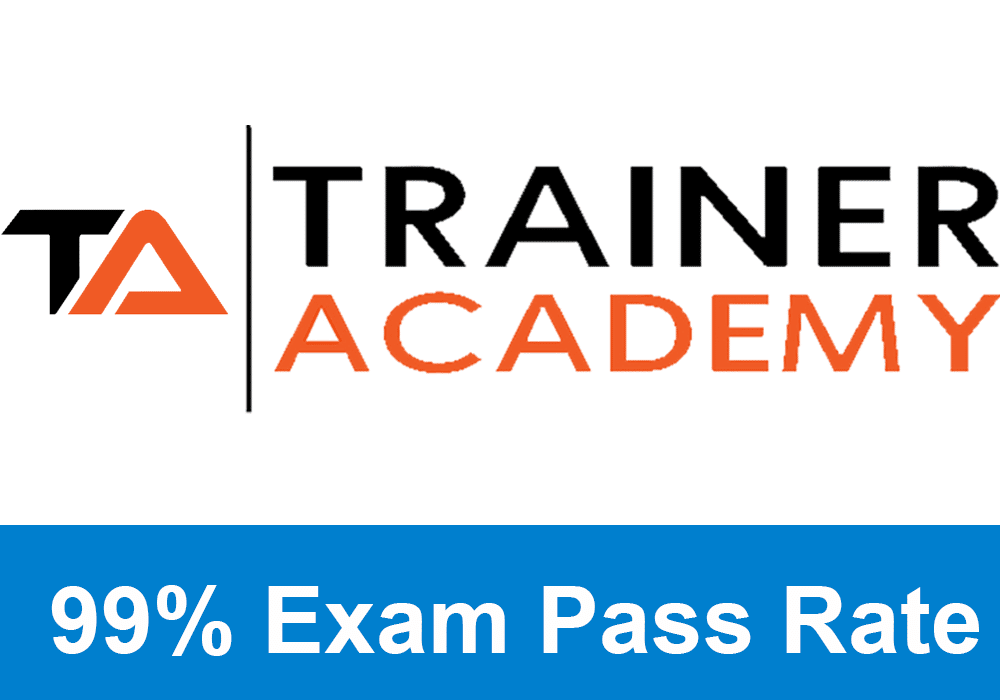
Get your copy of the NSCA CPT exam cheat sheet.
It helps immensely in studying for the NSCA-certified personal trainer exam and is provided by a veteran company in study materials, Trainer Academy.
My PTP students report cutting their NSCA study time and effort in half with Trainer Academy.
Benefit from the Exam Pass Guarantee and Retake Fee Guarantee. Plus, take advantage of my current discount code PTPJULY for 35% off the MVP Program (Ends July 14th, 2025).
Try it out for free here to see if it’s right for you, or read my detailed review for further insights.
Chapter Objectives:
- Know a personal trainer’s scope of practice and when and how to refer clients to a nutritional professional.
- Be able to review the diet of a client and estimate their energy expenditure and requirements.
- Know the changes in nutritional and fluid requirements for clients that occur due to exercise.
- Be able to advise clients on the guidelines for gaining and losing weight.
- See the role and appropriateness of dietary supplementation.
Role of the Personal Trainer Regarding Nutrition
It is within the scope of practice for a personal trainer to address misinformation and to advise clients on nutrition for physical performance, the prevention of disease, losing weight, and gaining weight.
Trainers need to refer someone to a nutritional professional when a client has a diseased state affected by nutrition. This is called medical nutrition therapy, which is strictly used by nutritionists, dieticians, or registered dieticians.
Who Can Provide Nutrition Counseling and Education?
Before assessing a client’s diet, trainers must contact their state dietetic licensing board or the country’s organization for dietary regulation.
In the US, each state regulates nutrition by providing nutrition info through licensure, statutory certification, or registration.
Licensure: The statutes include a scope of practice that is explicitly defined, and the profession’s performance is illegal unless they have obtained a license from the state.
Statutory Certification: This limits the use of certain titles for people who meet the predetermined qualifications, but people who are not certified may still practice the occupation or profession.
Registration: The least restrictive form of state regulation. Unregistered people are permitted to practice the profession. Exams are typically given, and registration enforcement is minimal.
Dietary Assessment
Dietary Intake Data
It is important to look briefly over the current diet of a client before getting too detailed with advice.
Exclusive PTP CPT Offers |
||
|---|---|---|
Most Popular Cert | Best Online NCCA Cert | Best Study Materials |
Gold Standard Cert | A Good Option | Best CPT for you?  |
Research shows that while it is a simple concept, gathering dietary intake data is also extremely complex. Most people have trouble recalling everything that they’ve eaten in a day. Most people will underestimate or underreport their actual data. There are three methods for gathering this dietary intake data.
Dietary recall: this is where you report the food you’ve eaten in the past 24 hours.
Diet history: This has you answering questions regarding your usual eating habits, likes, dislikes, schedule, and medical and weight history.
Diet records: This log is filled out for three days every time they eat.
The diet record is the most valid of the three options since it has you record it as you go and not recall information or answer questions.
Evaluating the Diet
We usually compare the diet of someone to the recommended dietary guidelines for the country. MyPlate is used in the US.
MyPlate is mostly used to be a reminder for healthy eating. It states that the diet should include these food groups.
- Grains
- Vegetables
- Fruits
- Protein
- Dairy
There are three main goals for Americans and their diet.
Balancing calories:
- Enjoy your food but eat less of it.
- Avoid eating oversized portions.
Foods to increase:
- Make half of the plate fruits and veggies
- Make half or more of your grains whole grains
- Drink fat-free milk or low-fat milk.
Foods you should reduce:
- Compare sodium in soup, bread, and frozen food and choose the stuff with the lowest amounts.
- Drink a lot of water instead of sugary drinks.
Calories from solid fats or added sugars are known as empty calories.
The foods that are the largest number of empty calories are:
- Cakes, cookies, pastries, and donuts.
- Sodas, energy drinks, sports drinks, and fruit drinks.
- Cheese
- Pizza
- Ice cream
- Sausages
Computerized diet analysis
Analysis of a diet for a client is detailed and time-consuming. It requires a lot of expertise. Personal trainers need to consider referring the analysis to dieticians or referring the client to someone else for the whole process.
Energy
Energy, in this sense, is viewed as kilocalories or kcals. This measure of energy equals the heat needed to raise the temperature of kg of water by one degree Celsius. We typically still refer to these as calories.
Factors Influencing Energy Requirements
Three factors make up the requirements of energy for adults.
Resting metabolic rate (RMR) is seen as the biggest contributor to total energy requirement. It accounts for 60 – 75% of the total daily energy expenditure. The things that makeup RMR are normal body functions and thermoregulation. To increase RMR, some things that work are gaining lean body tissue, young age, growth, abnormal body temp, menstrual cycle, and hyperthyroidism. Things that will decrease RMR are things like low caloric intake, loss of lean tissue, and hyperthyroidism.
The second largest energy requirement component is physical activity. This is the variable that changes the most out of all of them. The energy used depends on session intensity, duration, and frequency. Extreme weather increases caloric expenditure, too.
The thermic effect of food is the third component of energy requirements. This is the increase in RMR caused after eating and lasting for several hours. This is about 7 – 10% total energy requirement.
Exclusive PTP CPT Offers |
||
|---|---|---|
Most Popular Cert | Best Online NCCA Cert | Best Study Materials |
Gold Standard Cert | A Good Option | Best CPT for you?  |
Estimating Energy Requirements
It is hard, and possibly impossible, to get an estimate that is correct for someone’s energy expenditure. Personal trainers help the clients base estimation on intake or use equations that are in this chapter. Every estimate made in this chapter is still just a rough estimate.
Nutrients
Protein
Proteins are a main nutrient of interest for humans, especially bodybuilders, weightlifters, and other people who train with resistance training.
Energy intake and protein sources are two of the most important factors to consider when finding protein. Protein also may be used as a last resort when running low on carbs and fat.
Protein requirements from meats will be lower than if the main protein source is from plants.
There are 4 kcals found in proteins per gram.
0.83 g/kg is recommended per day for the average person.
For athletes 1.2 – 2.0 g/kg per day is recommended per day.
Excess protein intake has many severe side effects.
Carbohydrates
Carbs are required for the complete metabolism of fatty acids.
Ketosis is prevented if you take 50 – 100 grams of carbs daily. Ketosis happens with high levels of ketones in the bloodstream.
There are also 4 kcals found per gram of carb.
Dietary carbs will be used to replace the muscle and liver glycogen during high-intensity activity. It is recommended to take a high-carb diet when exercising a lot.
Dietary Fat
The body needs a low amount of fat. 3% of energy needs to come from omega 6 fatty acids and 0.5 – 1% should be omega 3 to prevent any big deficiencies. Even though the need is low, many people don’t get their needs met with dietary fats due to over-restriction.
We see approximately 34% of calories in the typical American diet.
Fats are 9 kcals per gram.
Vitamins and Minerals
Dietary reference intakes are used in the US and Canada. These are how we gauge the need for vitamins and minerals. These two are taken in smaller amounts than the macronutrients we just discussed.
DRIs are put into four categories:
- Recommended Dietary Allowance: The intake that is thought to meet the nutrient needs of 97 – 98% of healthy people in an age group.
- Adequate Intake: The goal intake when there isn’t enough scientific research to estimate RDA.
- Estimate Average Requirements: The intake that will meet the estimated nutrient needs of half the group’s people.
- Tolerable Upper Intake Level: The max intake that will not lead to health risks or adverse effects in most people.
Water
This can be a worry for some and not a worry for others.
General Fluid Intake Guidelines
The generally known intake to shoot for is 1.9L to up to 7.5L per day. Neither is more right as it depends on the factors of where you live and the activities you partake in.
Basically, the goal is for us to avoid becoming dehydrated.
Fluid Intake and Exercise
Before exercise, we should have 5 to 7 mL of water per kg of body weight 4 hours before exercise. We watch the urine color not to let it become too dark.
Ideally, we want to prevent dehydration during exercise by taking in as much water as we are losing. Most people only take in 2/3 of the sweat lost. Thus, trainers should be aware of it.
Post Exercise will likely see slight dehydration, so we should aim to return to pre-exercise levels.
Weight Gain and Weight Loss
We see two main reasons to gain weight: To improve physical appearance or to enhance athletic performance.
It is recommended for us to gain weight by increasing our daily calories by 350 – 700 calories. This will keep the fat gain lower and would lead to about 1 – 2 pounds of gain in lean tissue. Larger portions are recommended over adding in meals. 1.2 – 2.0 grams of protein per kg is ideal.
Two typical reasons for wanting to lose weight are those that are normal weight wanting to lose body fat for aesthetics and those that are overweight and want to lose weight for health reasons. Clients must consider a few principles for weight loss.
- The ability to achieve and maintain minimal body fat is somewhat genetic.
- Gaining weight and losing body fat simultaneously depends on the program and nutrition. It is harder for trained athletes.
- 1 – 2 pounds lost per week is usually from a deficit of 500 – 1,000 kcals daily. This can be from both exercise and diet. There can be a noted loss in lean tissue that must be watched and prevented.
- Diets should be made of food that is low in energy density. This density is about the calories per weight or volume.
- Diets need to be balanced nutritionally from different food groups.
Evaluating Weight Loss Diets
To spot fad diets, we look at the following as signs.
- The diet takes out a food group that may see nutrient deficiencies and won’t last long.
- A diet may emphasize one food or type of food.
- It may be too low in calories.
- Physical activity is discouraged or deemed unnecessary.
- The diet promises quick results.
Dietary Supplements
Dietary supplements are regulated in the US by the DSHEA.
48% of US adults take some form of supplement.
Vitamins and minerals are the most popular to be supplemented. This can sometimes be harmful when we start to over-supplement.
In fitness-specific supplementation, we see a lot of creatine and amino acids supplements.
If you want assistance wrapping your head around this material, make sure to check out Trainer Academy for some awesome NSCA study materials. They have Practice tests, flashcards, and a fantastic study guide. They even offer an exam pass guarantee.

 Have a question?
Have a question? 



Tyler Read
PTPioneer Editorial Integrity
All content published on PTPioneer is checked and reviewed extensively by our staff of experienced personal trainers, nutrition coaches, and other Fitness Experts. This is to make sure that the content you are reading is fact-checked for accuracy, contains up-to-date information, and is relevant. We only add trustworthy citations that you can find at the bottom of each article. You can read more about our editorial integrity here.